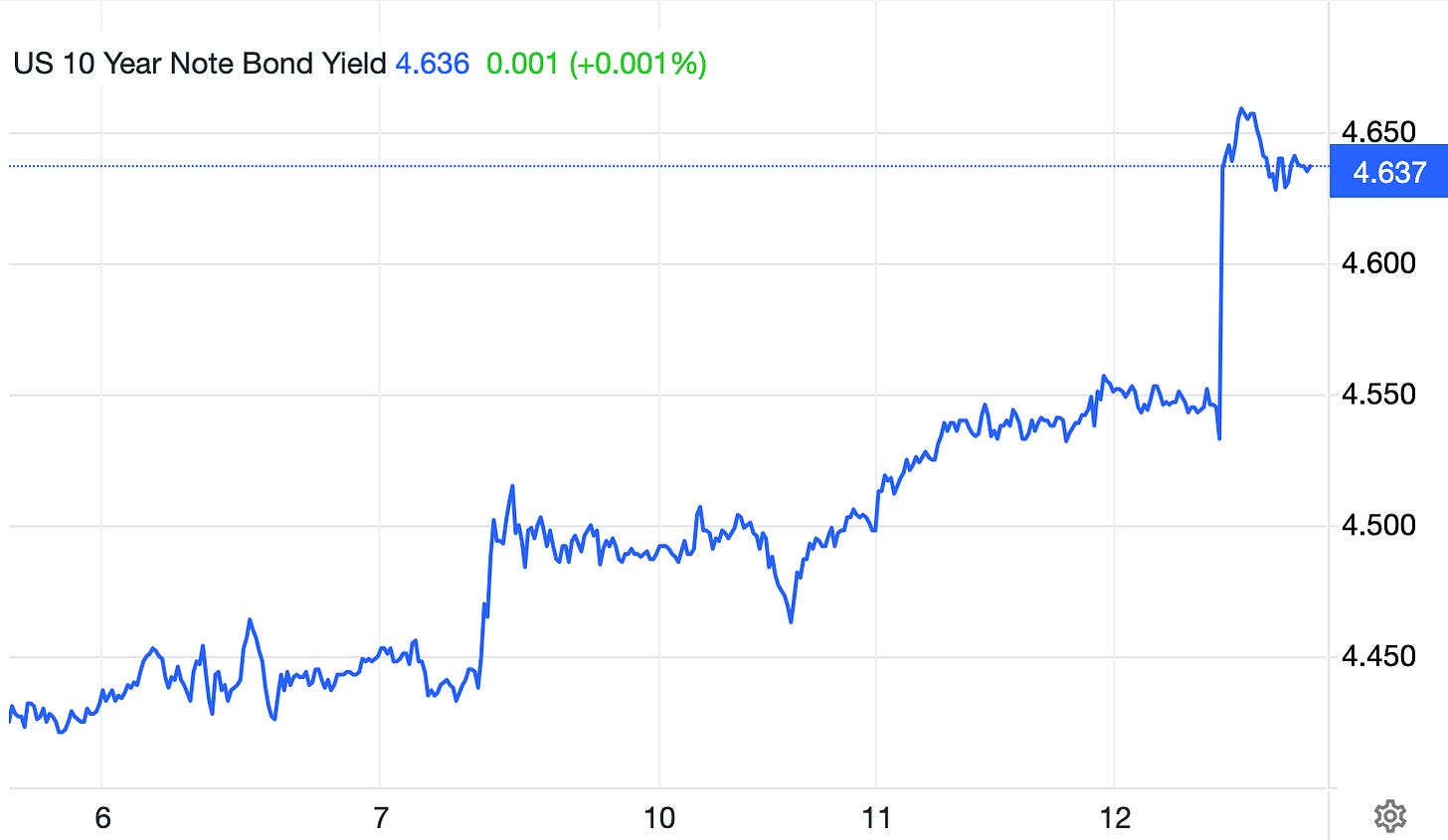Wolf!
There's plenty of risk in a president calling for such a broad range of tariffs, but there's even more in a market that doesn't seem to believe him.
The problem with any threat is knowing if it’s real.
You have to be impressed at the dizzying action that President Trump has delivered with barely a month in office. But as we await the far more consequential outlines of U.S. fiscal policy from Congressional negotiators, investors and corporate strategists are scrambling to make sense of America’s emerging tariff policy.
Amid the blizzard of threats, announcements and suspensions, the big question remains just how serious the president is about imposing steep duties on imports that will have direct consequences for inflation, interest rates and growth. The immediate risk, however, may be that investors start to doubt the president’s seriousness, while he interprets stable market performance as license to deploy some of his more extreme measures.
Trump campaign promises of 60% tariffs on China and 25% on everyone else look increasingly unlikely, but it’s even less likely that no tariffs will rise from here. You will recall that at the end of the famous fairy tale, the wolf eats the sheep.
This week’s stock market correction has more to do with hot inflation numbers than with America’s new trade policy. Rising yields yesterday may well be more related to core consumer price index coming in above expectations. But it’s also worth noting that they started rising Monday after tariffs on steel and aluminum imports hit the headlines.
For all the president’s promises about all the tariffs yet to come, it’s hard not to think back to February 3 when he suspended the levies he had announced on Mexico and Canada. The decision may have come, in part, from a sharp market reaction in Asia and Europe, or from the combined opposition by both business and union leaders. In any case, the calls with President Scheinbaum and Prime Minister Trudeau looked highly staged to show off “concessions” from Mexico City and Ottawa that were likely already in the pipeline.
This week’s announcement of steel and aluminum tariffs without any exceptions also raises eyebrows when Australia’s prime minister reports that he has already secured an exception. We’ll be watching for political leaders and industry groups to launch intense lobbying efforts to secure their own loopholes before these levies take effect on March 12.
The market risks will rise as investors grow more complacent about the odds of new tariffs sticking. It’s hard to know where they will land or how high they will be, but many will surely take effect. And given the relative calm that investors have shown so far, the president may feel even more emboldened to test the extremes.
Brace for much more volatility, which is code in market commentary for prices falling. And things could get much worse in a scenario that triggers retaliation by America’s friendliest and most important trading partners followed by several rounds of escalation. Tariffs in themselves are not inflationary, but trade wars are.
Not even a big round of corporate tax cuts when the next budget comes into view will compensate for the uncertainties of a new world with trade barriers that rise unpredictably. That could lead to an enduring market sell-off with consequences for the president’s poll numbers.
In some versions of the fable, the wolf ate the boy, too.




